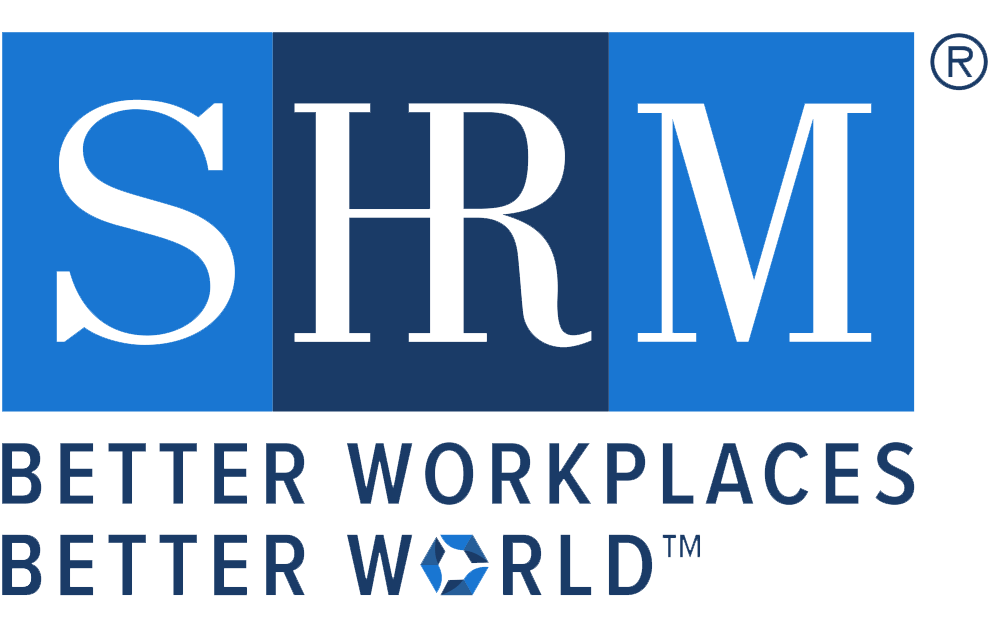Problem Solving Skills Test for Employers: Assessment to Hire the Best
This problem solving skills assessment will help you hire employees who make your life easier.
It can be extremely frustrating to hire a promising candidate, then get stuck helping them complete daily tasks. Sadly, this is all too common when hiring teams lack the ability to assess candidates for problem-solving skills.
Job competency is difficult if not impossible to gauge based on a resume and personality. Yet when hiring managers fail to assess it, they tend to hire the best resume writer or interviewee — not the best candidate for the job.
Not only is this expensive, but it’s also time consuming. A study by HR firm Robert Half found that managers spend almost one day each week handholding poorly performing employees.
Thankfully, a few simple problem-solving assessment tools can help you screen for the right candidates and increase the likelihood of making a great hire. Below, you’ll find a sample problem-solving skills test you can use to assess your applicants. We’ll even provide some best practices to use the test for optimal results.
Ready?
Use the problem-solving test below to screen your candidates
or let The Hire Talent do it for you. We’ll screen for problem-solving skills and other traits — including honesty, interpersonal communication, and more — to automatically prequalify your applicants.
Problem Solving Skills Test
A problem-solving skills test assesses how well a person (like a job applicant) can process complex challenges and find solutions. Problem-solving assessments tend to rely on a mix of logical, analytical, and critical thinking. The tests predict job performance and lower the risk of bad hires.
Are you looking for interview questions to test problem-solving skills in your candidates? Use our list of problem-solving skills test questions and answers to measure your applicants’ ability to think on the fly.
You can copy-paste this assessment. But — see below the list for best practices to use them like a pro.

1. When driving, what does “right on red” mean?
- You can turn right after stopping at a red light.
- You can turn right without stopping at a red light.
- You can turn right sometimes at a red light.
- You can turn right at a red light in most states, but not all.
- You must turn right if the light is red.
Answer: A. This question tests to see if related, unimportant, or incorrect details will confuse the candidate during the problem-solving process.
2. Choose the pair of words that are related like CAT : HAT.
- Leopard : Person
- Ramp : Stamp
- Clerk : Shirt
- Feline : Bonnet
- Hall : Office
Answer: B. Both words rhyme. Some of the others seem to be related in some ways (the clerk is alive, and the shirt is an item; feline is like cat, and bonnet is like hat) but those sets of words aren’t related to each other — only to the cat : hat pair. Again, this question tests to see if unimportant details will confuse the applicant.
3. Of these five items — bicycle, box, car, basket, and chair — which one is in another category than the other four?
- Bicycle
- Box
- Car
- Basket
- Chair
Answer: C. The car is in its own price category. Some of the others seem to have their own categories (they have wheels, they can contain things) but only the car is in a category by itself. This question checks whether the applicant can identify patterns.
4. If green = 5, purple = 6, and aquamarine = 10, then crimson = ?
- Magenta
- Green
- Purple
- Aquamarine
- Red
Answer: A. Crimson = Magenta because they both have seven letters. This question checks to see if the candidate can recognize patterns.
5. Jim is 45 miles from the office and is driving at 60 miles per hour. His boss is 15 miles from the office and is driving 20 miles per hour. His assistant is 20 miles from the office and is driving 40 miles per hour. Who will reach the office last?
- Jim
- Jim’s boss
- Jim’s assistant
- They will all arrive together
- Jim and his boss will arrive together, last
Answer: E: Jim and his boss will arrive together, last. Jim travels 1 mile in 1 minute for 45 miles (45 min). His boss travels 1 mile in 3 minutes for 15 miles (45 min) and his assistant travels 1 mile in 1.5 minutes for 20 miles (30 min). This question tests whether the applicant can apply math to everyday problems.
6. What are the next two numbers in the series: 1, 1, 2, 3, ...
- 4, 6
- 5, 8
- 7, 10
- 9, 12
Answer: B. The answer is 5, 8 because with this series, you add the previous two numbers to get the next. This question tests the ability to recognize patterns.
7. One ounce of skinless chicken breast contains 0.9 grams of saturated fat. Jeremy can eat 23 grams of saturated fat per day. How many ounces of chicken breast can he eat?
- 1
- 4
- 25.5
- 26
Answer: C. It’s 25.5 because 23 / 0.9 = 25.5 (repeating). If Jeremy doesn’t want to go over his 23 grams, he should stick to 25.5 ounces and not round up the decimal. This question tests the ability to apply math skills to everyday problems.
8. Peter’s Sporting Goods has cut costs by 25% since last year. Costs this year were $30,000. How much were costs last year?
- $20,000
- $40,000
- $33,000
- $37,500
Answer: B. $40,000 because 25% of 40,000 is 10,000. This question tests the ability to apply math skills to everyday problems.
9. There are about 20,000 towns and cities in the U.S. A major city has about 2,000 gas stations. A small town has about one. About how many gas stations does the U.S. have?
- 30,000
- 40,000
- 60,000
- 120,000
- 150,000
Answer: C. 60,000 because there are at least 20,000 gas stations (1 per town) but there are about 10 major cities (adding another 2,000 * 10 = 20,000). There are also plenty of mid-sized cities that add at least another 20,000 gas stations, but probably not enough to reach 120,000. This case-style question tests the ability to think critically, estimate, and apply math skills to everyday problems.
10. Tim counts seven baby carrots down one side of a square bag. The bag is about three carrots deep. If Tim eats 10 baby carrots per day, when will he have to go back to the store for more?
- In five days
- In 10 days
- In 14 days
- In 15 days
- In 20 days
Answer: C. In 14 days, because (7 squared * 3) / 10 = 14.7. So, Tim will only have seven carrots left on day 15. This question checks if the applicant can apply math skills to everyday problems.
How We Created This Solving Skills Test

We developed the problem-solving skills assessment above based on a variety of fields of reasoning, including (but not limited to):
- Best practice reasoning
- Logical reasoning
- Matrix reasoning
- Cognitive ability
- Verbal reasoning
- Mathematical reasoning
These fields all pertain to a person’s ability to think critically about a problem and generate creative solutions.
An initial pool of questions was administered to a large sample group to verify its validity and reliability in measuring critical problem-solving factors. Through statistical analyses, our team narrowed the final list of questions, working to ensure the test was free from bias and positively correlated to job performance outcomes.
How to Test Problem Solving Skills

By using the problem-solving skills quiz above, you can assess your candidates on their real-world problem-solving capabilities. This keeps you and your hiring team from making mistakes based on charisma or a highly polished resume.
Here are four steps to help you use a problem-solving skills assessment in your own hiring process:
1. Use science-tested questions and answers like the ones above
Feel free to use our provided questions and answers, or come up with your own. It’s important that the questions you use are fair and understandable for all potential test takers. Otherwise, you run the risk of adverse impact — discrimination caused by hiring or employment biases.
2. Administer the test to applicants through an easy-to-use interface
Candidates are more reluctant to complete assessments if the test interface is buggy, confusing, or cumbersome. Make sure you’re leveraging up-to-date technology, especially if the test has a visual aspect to it, such as our Matrix Reasoning Test.
3. Collect and store applicant responses securely
Candidates, like employees, expect a baseline of respect and professionalism when they interact with your organization. A breach could sink your company’s goodwill. Store applicant data only on servers that meet industry-standard security protocols.
4. Score answers per best practices
Using a standard scoring rubric can help ensure fairness and objectivity throughout the screening process. Do your due diligence and research the actual skills needed for the position you’re hiring for. Otherwise, it’ll be difficult to judge whether or not an applicant's score passes the test.
Why Are Problem-Solving Skills Important to Employers?
Problem-solving skills have always been valuable to employers, but they’re becoming an absolute necessity. In a World Economic Forum report, companies cited “complex problem-solving” as a top-three desired trait.
As digital transformation ramps up, the need for more complex decision-making is increasing. Whether your company is a fast-moving software startup or a heavily regulated financial firm, problem-solving ability helps to ensure your business can adapt to market changes.
Employee problem-solving skills keep your products innovative, your operations nimble, and your bottom line strong.
Benefits of a Solving Skills Test

Finding problem-solving in candidates can be challenging without the right tools. But with those tools in hand, you can avoid the deadly HR sin of “filling roles fast” without paying attention to employee quality.
Find the Right Employees
By using a scientifically proven problem-solving skills assessment, you can narrow down your applicant list faster. At the same time, you can ensure you have the right fit for the job.
Predict Performance
Assessing candidates for problem-solving ability is a reliable way to predict on-the-job performance. The objective nature of these tests increases hiring accuracy while slashing hiring biases. This makes for a more holistic and fair interview process.
Improve Onboarding
The benefits of a problem-solving skills test extend beyond the hiring process. By hiring the right people, you set your new hires up for success. This can improve your company’s onboarding experience and lead to higher levels of engagement and retention.
Low Cost
Problem solving tests are low-cost solutions. Not only will you save money wasted on bad hires, but you’ll save time and effort tracking down the right candidates for your company’s needs.
What Are Problem Solving Skills?

Problem-solving skills are a set of characteristics that allow employees to assess complex business questions, evaluate potential outcomes, and choose solutions that yield the desired outcome based on current or future goals. These skills are among the most sought after in the workplace.
Problem-solving skills are deeply tied to a long list of other skills. To solve problems, an employee will often need to lean on skills like:
- Critical thinking: Employees should understand the “why” behind business goals and decisions. The ability to think critically goes hand in hand with problem-solving skills.
- Honesty: The most innovative business ideas only come about when employees share candid feedback with their managers and teams. Honesty is a powerful catalyst for productivity.
- Empathy: Great employees tend to understand the needs of their manager and peers. When your employees show empathy for one another, it tends to create greater cohesion, engagement, and retention.
- Autonomy: The term “self-starter” has become a bit of a cliché in today’s recruiting world. Still, employees who take initiative in the workplace tend to be high-performers you and your organization can rely on.
What Roles Need Problem Solving Skills?
Nearly every job title can benefit from problem-solving skills. Whether you’re hiring an administrative assistant or a new executive to join the C-suite, you’ll want to prioritize candidates who show the ability to process and leverage complex information.
The following job titles can benefit in particular from a problem-solving aptitude. Note the wide range of titles, but also some of the commonalities — namely, roles that thrive on analytics, creativity, or precision.
- Accountant and Finance
- Administrative Assistant
- Analyst
- Barista
- Bookkeeper
- Branch Manager
- Business Analyst
- Buyer
- Caregiver
- Chief Executive
- Construction Laborer
- Controller
- Customer Service Representative
- Director of Operations
- Driver
- Electrician
- Engineer
- General Manager
- Graphic Designer
- HR Director
- HR Generalist
- HVAC Installer
- Inside Sales
- Landscape Crew Worker
- Management
- Marketing
- Mechanic
- Nurse
- Paralegal
- Personal Assistant
- Process Engineer
- Production Worker
- Programmer
- Project Manager
- Sales
- Software Engineer
- Superintendent (Construction Manager)
- Supervisor
Summary
Problem-solving skills are becoming more critical as organizations hurtle toward a digital-first tomorrow. By using a problem-solving skills test like the one above within your existing hiring practice, you’ll future-proof your business while ensuring you hire the very best people for the work at hand.




